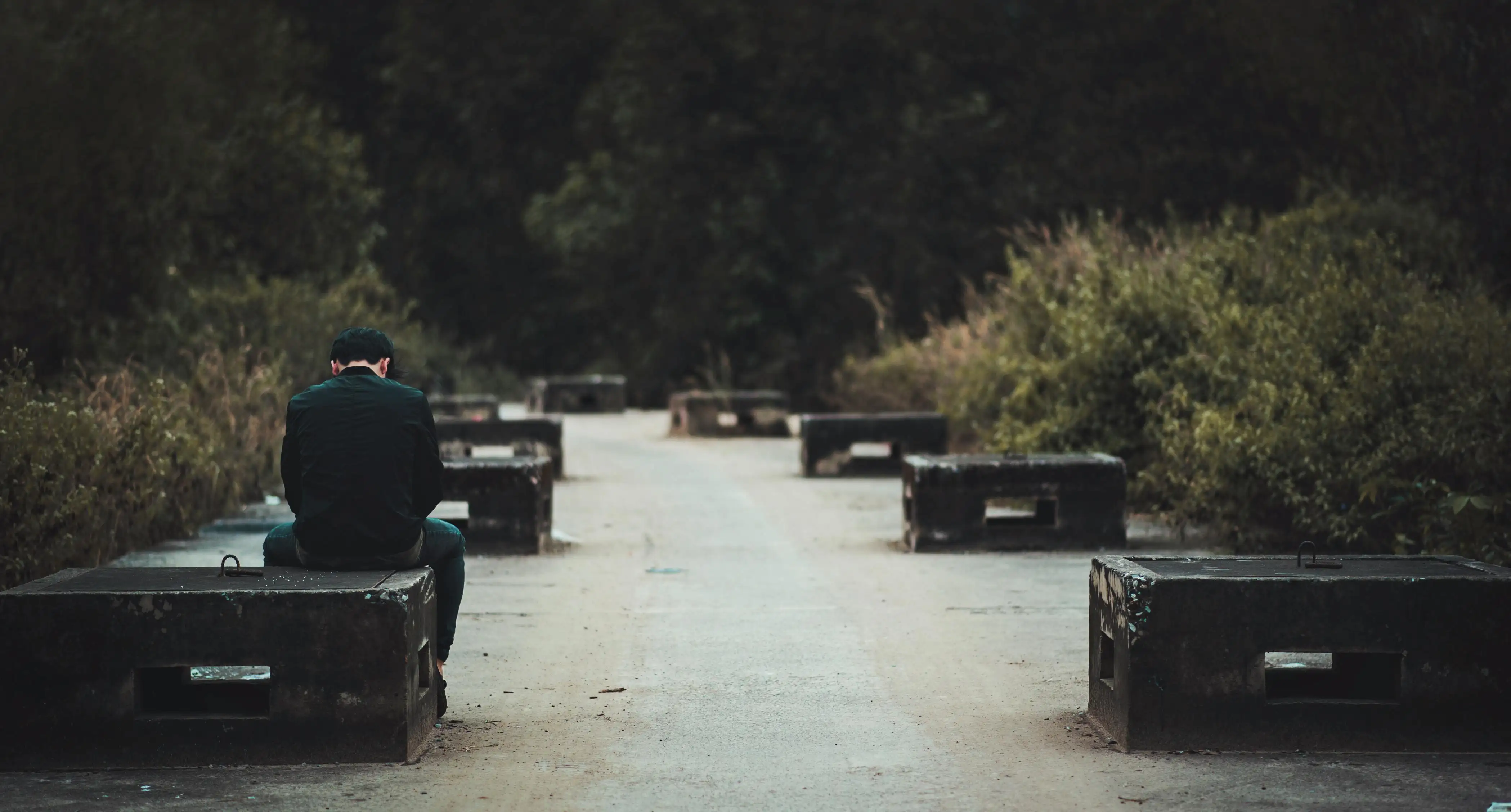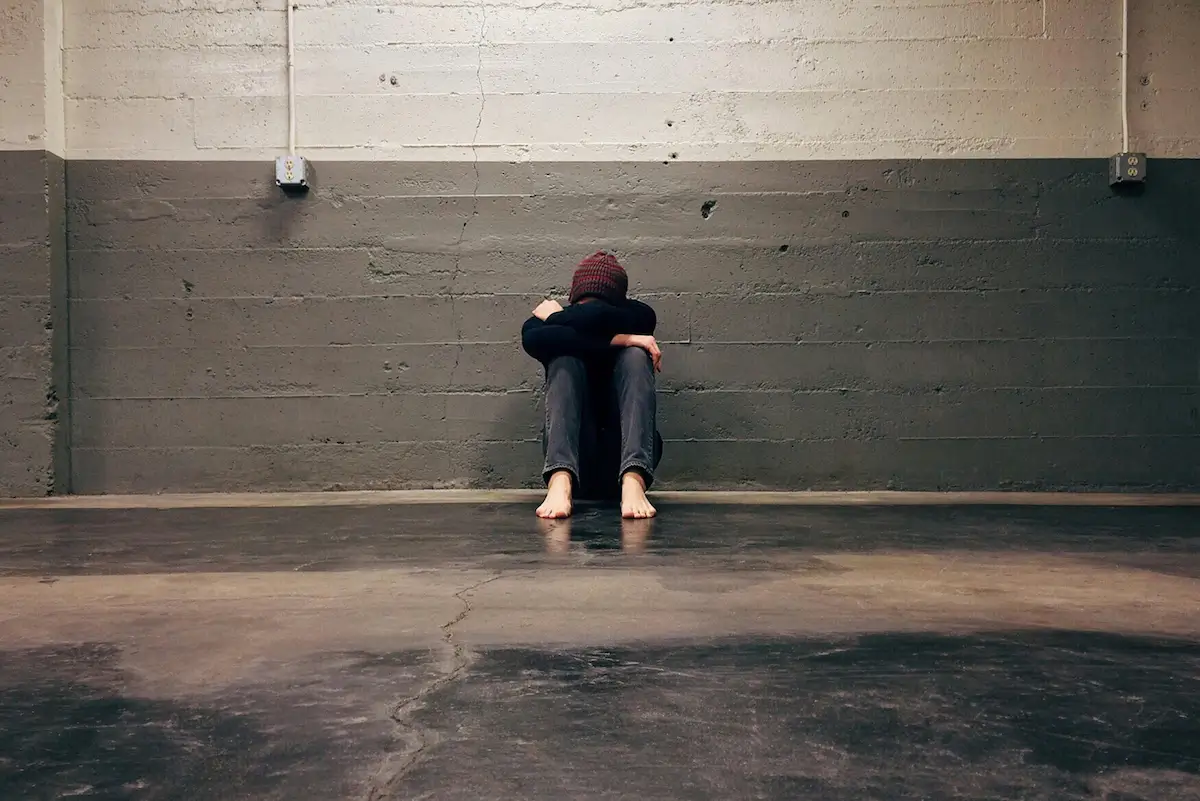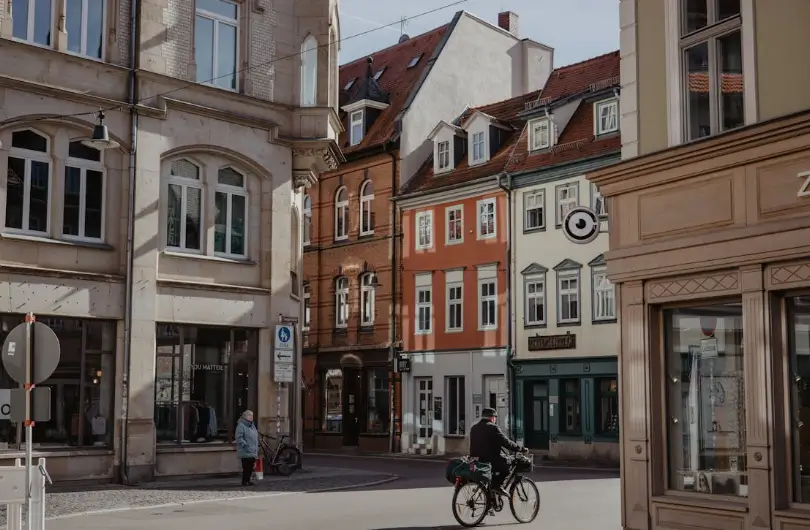Urban Design and Loneliness
Urban design is holding you hostage in a lonely cell. It has separated you from your neighbors, your friends, and even your family. It has you in chains and has thrown away the key to your freedom.
You can feel it.
Maybe not every day, maybe not all the time, but more than expected. More than feels okay to admit.
When was the last time you made new friends? How often do you hang out with your current ones? How often do you say hi to strangers...or even want to. Do you even remember the sound of children playing in the street?
Maybe it’s that silence when you come home. Maybe it's how you keep your headphones in while shopping because you know no one’s going to say hello anyway. Maybe it’s how you haven’t had a real conversation with someone who lives on your street in months. Or how your dog has more social interaction than you do.
You go from waving at neighbors to pulling straight into your garage. From walking to the store to driving 15 minutes, getting what you need, and leaving without making eye contact.
This personal isolation. This lonely, dismal prison is now a normal part of our society. But why?
The answer is literally a stone's throw away...our cities.
The fact of the matter is our cities weren’t designed for connection. They were designed for convenience, for separation, for speed. And now we’re starting to see and experience the tragic cost. According to the U.S. Surgeon General, more than half of American adults report feeling lonely on a regular basis with some of the highest rates among young adults. You may be tempted to think this is a minor issue, after all, who doesn't enjoy some personal space?
Right?
Well....wrong.
Loneliness and personal space are two very different things. Loneliness is the painful feeling that comes from a gap between social connections you want and the connection you actually have. As such, it's not the same as simply being alone. Loneliness is about the perceived isolation. It's said that you can be surrounded by people and still feel deeply alone. This is not just a catchy phrase, it’s both psychologically and scientifically true.
Chronic loneliness is now even linked to increased risks of heart disease, dementia, anxiety, depression, and premature death. The health effects are so serious they’re being compared to smoking 15 cigarettes a day.
That's crazy!
Most headlines focus on screen time, social media, and remote work. But there's a deeper layer here. Something sinister and unsettling that shapes our lives right in front of us, without us even noticing. This all comes down to how we’ve physically shaped the world around us.
Our built environment directly influences how connected we feel to ourselves and to others. The streets we walk, the places we gather, the distances between them, all of this and more reflect our lonely society. For decades, we've designed our cities in ways that unintentionally make it harder to form social bonds...some would even argue the design is intentional.
How Our Cities Are Quietly Tearing Us Apart
"Tearing us apart" may seem like a strong verb to use here, but it is, unfortunately, accurate. The way our urban environments are designed forces us to live seperated from those we love. Even when we intentionally want to live close to them, our urban environment will make it almost impossible to do so...and here's how.
Car-First Design
The vast majority of American cities prioritize vehicle traffic over pedestrian experience. Design decisions such as wide roads, limited sidewalks, massive intersections, and endless parking lots are now standard in most cities. This makes it easier to get from point A to point B but far less likely that you’ll encounter a neighbor along the way. Fewer shared spaces means fewer chances to connect. In many suburbs, it’s possible to live for years without knowing the people who live just a few doors down. Think about it, how many neighbors can you name right off the bat?
Single-Use Zoning
Traditional zoning codes often separate residential areas from commercial and recreational uses. You can’t grab a coffee without getting in the car. There’s no corner store to wander into, no natural gathering point within walking distance. By pushing every function of life into its own box, we’ve cut off the natural flow of community.
The Disappearance of Third Places
Sociologist Ray Oldenburg coined the term “third places” to describe locations outside home and work where people casually interact. Think parks, cafes, barbershops, libraries. As explained in his 1989 book The Great Good Place, these are vital gathering spots that help foster social ties and a sense of community. These spaces are essential to a sense of belonging, yet they’re increasingly rare. Instead, we’ve built communities around retail plazas, highways, and HOA rules that prioritize privacy and control over community and connection.
Oversized Infrastructure, Undersized Social Life
Our infrastructure favors throughput over texture. Six-lane arterials, massive setbacks, and drive-thru everything create a fast but fragmented urban fabric. Public transit in most American cities is unreliable or nonexistent, making car ownership a necessity and isolation a default. The average American spends nearly an hour a day commuting, often alone. According to the American Time Use Survey, most full-time workers spend about 54.5 minutes commuting each day, which adds up to significant time spent in isolation over weeks, months, and years.
What a More Connected City Looks Like
Loneliness has become so common in our society that we have forgotten what not being lonely looks or feels like. How can we fix something when we don't even know what the end goal looks like? How do we become less lonely when we don't know what less lonely is? Sometimes we simply need a point in the right direction... and this is that point.
People-First Streets
First, we have to tackle our streets. We have to champion street designs that are made for pedestrians and cyclists as opposed to streets that are made for cars. We need to promote and protect a space for a slower pace of transit that encourages spontaneous interactions. Sidewalks, shade trees, street furniture, and slower speed limits all play a part in making public space feel safe and inviting. Now, the thought of spontaneous interactions might terrify some of you, but before you retreat into "nope" I want you to think about something. A lack of such interaction is literally killing you. This is not an exaggeration or a drill. This is happening...right now.
Mixed-Use and Missing Middle Housing
A blend of apartments, duplexes, townhomes, and single-family homes with shops, schools, and parks nearby is the way to create community. Spaces and neighborhoods where people of different ages and incomes live and cross paths are spaces that are full of energy and life. These are the type of spaces that encourages familiarity and interaction. The spaces that provide the ability for families and friends to live closer together. Opportunities to play together. To Interact. Socialize. LIVE. What kind of life lives in a silo?
Accessible Third Places
Cities should invest in accessible, well-maintained public spaces that aren’t tied to consumption. That means more than splash pads and playgrounds. It means investing in places like plazas, porches, community centers, pocket parks, and sidewalks that lead somewhere worth going to. That leads to places where there are people worth talking to. Conversations worth having. If you walk out of your house, right now, can you walk to a place where a group of people you don't know congregate? If you can't simply walk there then guess what, that space is not accessible...and that's a problem
Zoning for Connection
We need to move beyond exclusionary zoning codes that segregate uses and people. Form-based codes, overlays that encourage walkability, and policies that allow more housing types can all bring us closer, literally and socially. As a planner, I have seen firsthand efforts to bring about changes to strict exclusionary residential zoning only to be defeated by the fear of increased density, increased traffic, increased people...different kinds of people. But guess what, THAT'S what we need! We need life, we need connections, we need people! Cities should not pretend to favor large lots with big houses that blatantly discourage any form of genuine interactions. Cities are meant to be dense. If you need a large lot, then a city might not be for you. But at least those of us, who don't want to die from loneliness, have the opportunity not to.
Final Thoughts
We don’t need more apps or productivity hacks to feel less alone. We need each other. And for that, we need places that bring us together.
Loneliness may feel personal, but it’s also political. It’s shaped by policy, by asphalt, by ordinances and setbacks and curb cuts. If we want stronger communities and healthier lives from a sense of belonging that goes beyond the algorithm, we have to start building for it.
Fixing how we live is important, but so is fixing where we live.
The good news is that we can design our way back to connection. We just have to decide to do it.
If you want to see how urban design is affecting your neighborhood check out: Why Your Neighborhood is Boring.
%20(1200%20x%20237%20px)%20(300%20x%2059%20px).webp)


.webp)


